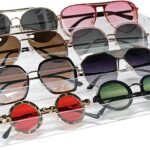The global sports and athletic socks market is poised for robust expansion, projected to grow from USD 2.5 billion in 2023 to USD 4.3 billion by 2031, reflecting a CAGR of 6.05%. This growth is underpinned by the convergence of health consciousness, technological advancements, and evolving consumer preferences.
Key Market Drivers
- Health and Fitness Trends: An increasing global emphasis on health and fitness has led to a surge in demand for performance-oriented socks that offer comfort, support, and moisture management.
- Athleisure Movement: The blending of athletic wear with everyday fashion has elevated the importance of stylish yet functional socks, making them a staple in both sports and casual wardrobes.
- Technological Innovations: Advancements in materials and design, such as moisture-wicking fabrics and ergonomic constructions, are enhancing the functionality and appeal of athletic socks.
Market Segmentation
- By Product Type: Running socks dominate due to high participation in running activities and the need for specialized features like arch support and cushioning.
- By Material: Synthetic blends lead the market for their durability and moisture-wicking properties, while cotton and wool blends are gaining traction among consumers seeking natural and sustainable options.
- By Application: Unisex socks hold a significant market share due to their versatility and broad appeal across genders.
- By End-User: Adults aged 18-54 represent the largest consumer segment, driven by active lifestyles and higher disposable incomes.
Regional Insights
- North America: Leading the global market with over 35% share, attributed to a strong sports culture and high consumer spending on athletic apparel.
- Asia-Pacific: Emerging as a high-growth region, fueled by increasing health awareness and a growing middle-class population engaging in fitness activities.
Challenges and Opportunities
Challenges:
- Price sensitivity and competition from low-cost alternatives may impact the sales of premium products.
- Market saturation and dominance by established brands can make market entry challenging for new players.
- Environmental concerns related to the use of synthetic materials raise sustainability issues.
Opportunities:
- Development of sustainable products using recycled materials and organic fibers to meet the demand for environmentally responsible products.
- Offering customization and personalization options to cater to individual preferences and enhance user experience.
- Implementing subscription models and sock replacement programs to ensure customer retention and consistent sales.
Conclusion
The sports and athletic socks market is set for continued growth, fueled by demographic trends, technological innovations, and evolving consumer preferences. Companies that focus on product quality, customization, and strategic partnerships are well-positioned to capitalize on the expanding market opportunities.



